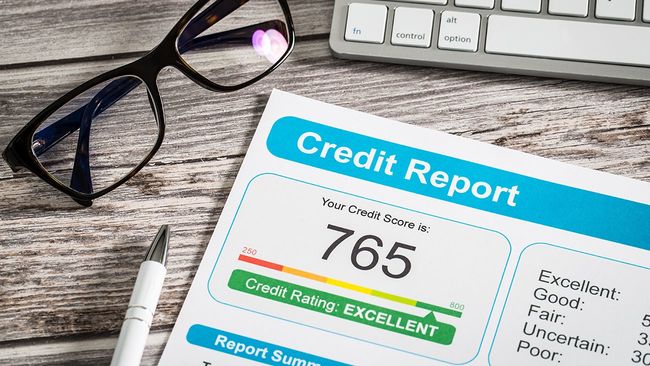How to Improve Your Mortgage Credit Score

Lenders use your FICO® (Fair Isaac Corporation) score to determine your credit risk, or ability to repay a loan. This applies to student loans, car loans, and mortgages — to name a few. When it comes to mortgages, the higher your credit score, the lower your mortgage rate will be.
Your credit score should be one of the first things to look at when getting your financial affairs to buy a home. All home buyers at one point or another need to ask themselves, "what constitutes a good credit score for a home loan?" More importantly, "If I don't have a good credit score, how can I improve it?"
5 Ways to Improve Your Credit Score
Follow these easy steps to improve your credit rating for a mortgage:
1. Check your credit report
Once a year, request your credit report from the top three bureaus: Experian, Equifax, and TransUnion. To check your score for free, use Mint for your personal finances — the score is updated regularly. Or use a distinct provider such as Credit Karma or WalletHub. Receive your free copy of all 3 reports once annually from annualcreditreport.com. Of course, these days online banking accounts like Chase or CitiBank will provide you a free FICO score update once a month. You just have to log into your profile.
2. Dispute any errors
If you’ve spotted a mistake on one of your credit reports, take immediate action. You’ll need to send a letter to the credit reporting company that illustrates the inaccuracies. Consider using the FTC’s consumer dispute letter to get you started. You may want to enclose a copy of your report with the items in question circled. The FTC also suggests you send your letter by certified mail, “return receipt requested,” so you can document what the credit reporting company received. Keep copies of your dispute letter and enclosures.
3. Pay down the balance
This is especially true when it comes to high-interest cards. Ensure you pay on time monthly and make efforts to pay more than the minimally required payment. Paying your cards off in full — on a monthly basis — is ideal for achieving the best FICO mortgage rates.
Also: be sure you are not maxing out card balances. It’s much healthier to actively use a couple of cards versus just one. And — believe it or not — you shouldn’t close any extra cards that have zero balance. This will help you maintain a higher utilization limit.
4. Set up payment reminders
Setting up payment reminders only takes a few minutes, but can have a significant impact on your ability to make payments on time. This is a great step to take because making your payments on time is one of the most important factors in determining your FICO® score. You don’t want forgetfulness to sabotage your FICO® score when you have the funds to make your payment on time.
5. Improve your credit utilization
Credit utilization (or balance-to-limit ratio) measures how much money you owe creditors compared to how much credit is available to you. For example, if you have a $2,000 balance on your credit cards but have a $10,000 credit limit, your credit utilization ratio would be 20%. To improve this ratio: pay off debts, especially those close to maxing out. To receive the best FICO mortgage rates: keep your debt utilization ratio under 30%. Remember that all outstanding loans are used for this calculation including student loans, auto loans, personal loans, etc...
Though it doesn’t affect or influence your credit score, you should also be mindful of your debt-to-income ratio, or your total debt divided by your monthly income. This number is as significant as your credit score, and lenders look at it when deciding whether or not to lend you money. So, if you want a lower mortgage rate, you’re going to want a low debt-to-income ratio.
Try our debt-to-income calculator.
Once you feel you have healthy credit, start shopping around for home loans. Of course, you can shop anytime, but good credit history makes it much easier to qualify.
Credit Score Requirements by Home Loan Program
FHA Loans
Minimum: 580
FHA loans are designed for lower credit borrowers and new home buyers. They are guaranteed by the FHA (Federal Housing Administration) and offer lower down payment options. Assuming you have a 580 or higher FICO®score, you may only have to put down 3.5% of the home’s purchase price. Depending on which lender you’re working with, that doesn’t mean you’re excluded from this loan option should your credit score be lower than 580. You just have to come up with a larger down payment, looking closer to 10% of the home’s purchase price. Either way, you’ll only need two lines of credit to qualify.
Conventional Loans
Minimum: 620
Credit score requirements for conventional loans vary by lender but tend to require a minimum of 620. With this loan program, it’s expected you have a good credit history and overall good to excellent credit. In return, you can expect to receive some of the most competitive interest rates and loan terms. Conventional loans are not guaranteed (backed) by the U.S. government and are instead offered by commercial banks and other lending institutions. Though the minimum for most borrowers is 620, each lender may have additional requirements like a bigger down payment or higher income level.
VA Loans
Minimum: 620
U.S. Department of Veterans Affairs (VA) loans have no minimum credit requirement. Each lender sets its own guidelines though, typically, lenders will require scores that are at least 600 for new home purchases or 620 for refinancing.
USDA Loans
Minimum: 640
If you plan to live in a USDA-designated (U.S. Department of Agriculture) rural or suburban area you may qualify for a USDA loan. These loans are geared toward low to moderate-income borrowers so your household income must be below 115% of that qualifying area's median income.
Jumbo Loans
Minimum: 700
Jumbo loans exceed the maximum loan amounts set forth by Fannie Mae and Freddie Mac. Currently, the threshold to be considered a jumbo loan is $715,000 (in most areas), and borrowers must have at least a 700 credit score for approval from most lenders.




